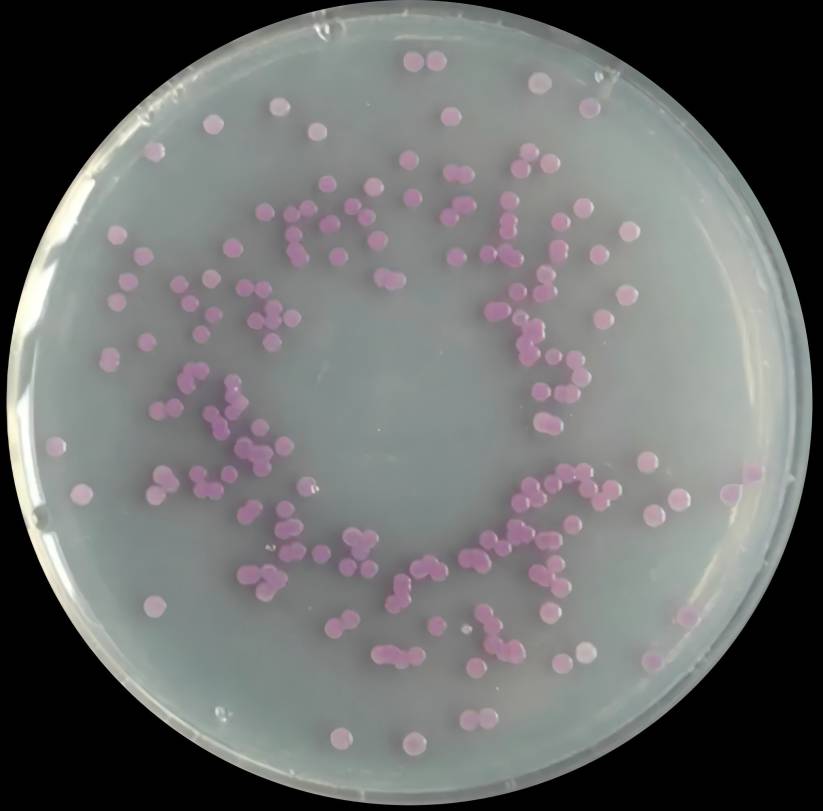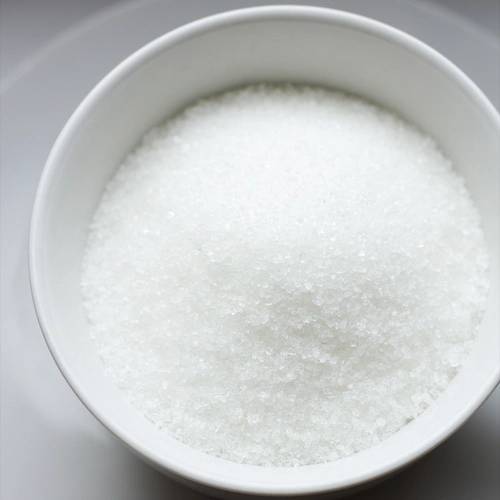Xylitol What Is It Made From?
Sugar alcohol is a five-carbon sugar alcohol, molecular formula for C5 H12 05, is an odorless white crystalline powder, similar in appearance to sucrose, sweetness and sucrose similar, calories and glucose comparable to very soluble in water, slightly soluble in ethanol and methanol 1]. Xylitol does not need insulin to metabolize in the human body, so it can be consumed by diabetic patients without increasing their blood glucose level. Xylitol can also prevent dental caries, and it is widely used in the field of medicine and food, with a large amount of usage2]. In addition, xylitol is widely used in the paper industry, chemical industry, plastic industry, paint and coating industry, surfactant industry, leather industry, storage battery industry, etc. In August 2004, the Office of Renewable Resources of the U.S. Department of Energy listed it as one of the twelve platform compounds that are prioritized for development and utilization3]. In recent years, with the growing demand for xylitol, the production methods and application of xylitol have attracted extensive attention.
Xylitol synthesis methods include chemical synthesis, chemical biosynthesis and total biosynthesis.
1 Chemical synthesis method
At present, domestic and foreign industrial production of xylitol is mainly chemical synthesis method, that is, rich in polysaccharide corn kernel, cotton husk, bagasse, yeast wood chips and other agricultural and industrial waste by acid (such as HCl, H2 S04) hydrolyzed into xylose after purification and hydrogenation reaction to produce xylitol.
Chemical synthesis method of xylose purification process is complicated, acid and alkali consumption; hydrogenation process requires high temperature (115 ~ 135 ℃), high pressure (about 6.5 × 106 Pa), flammable and explosive high-pressure hydrogen and nickel catalyst for xylose solution purity requirements are very high, capital investment and operating costs are high, pollution is more serious 4]. Chemical production of 1 ton of xylitol to consume nearly 10 tons of corn cob, 3 tons of acid, 2 tons of alkali, 120 ~ 150 kg of activated charcoal, 30 ~ 50 tons of steam, 100m3 of water to k5]. In view of the problems of high temperature, high pressure, expensive catalysts and complicated separation and purification processes in the process of xylitol production by chemical synthesis method, the international community began to study a new way of xylitol production - chemical biosynthesis method from the 1970s.
2 Chemical biosynthesis
The basic principle of chemical biosynthesis method is to hydrolyze the xylose hydrolysate obtained from agricultural wastes (such as rice straw, bagasse, corn kernel, etc.) containing polysaccharides by dilute acid hydrolysis, and use microorganisms to convert the xylose in the hydrolysate into xylitol directly. This method can eliminate the step of crystallization and purification of xylose, compared with the chemical synthesis method, greatly reducing the consumption of water, energy and xylose, thus reducing production costs.
Currently, the microorganisms that have been discovered and can be utilized include bacteria, molds and yeasts. Only a small number of bacteria can ferment xylose to produce xylitol, such as Enterobccter lifucefc- ciens6], Myobccterium smegmctis7], Corymebccterium sp.8], and other genera. Izumori et al. found that M. smegmatis has a strong ability to convert xylose to produce xylitol, and the conversion rate can be as high as 40% 7]. Molds that can convert xylose to xylitol include Penicillium, Aspergillus, Rhizoctonia, Gliobacterium, Rhizopus, etc. 9], but the ability of these bacteria to convert is generally poor. The ability of yeast to convert xylose to xylitol is the strongest, mainly Candida spiecies10], Pachysolen tannophilus11], De bcrcomyces zcnsenii12], Picz guilliennoncii13] and other species. Species such as C . guilliennoncii14] and C . tropicclis15] can convert more than 90% of xylose to xylitol within 24z.
The main factors affecting the preparation of xylitol by chemical-biological methods are the amount of aeration, xylose concentration, fermentation method, pH value and temperature, etc. Oxygen is the most important factor in yeast fermentation of xylitol. Oxygen is an important influence on xylitol production by yeast fermentation of xylose, and the two-stage controlled dissolved oxygen method is commonly used, such as Nolleu et al. used this method to cultivate C. guilliennoncii to transform xylitol. For example, Nolleu et al. used this method to cultivate C. guilliennoncii to convert xylose to xylitol, and the conversion rate could reach 80% 16].
Xylose concentration is an important factor affecting xylitol production, increase the concentration of xylose can increase the rate of xylitol production, such as increasing the initial concentration of xylose from 100g.L -1 to 150g.L -1 , C . tropicclis in a higher concentration of xylitol, the xylitol production rate can be increased. If the initial concentration of xylose was increased from 100g.L-1 to 150g.L-1 , C. tropicclis could increase the rate of xylitol production from 1.78g/(L . h ) to 2.5g/(L . h ) under higher ventilation. h ) to 2 .44g/(L.h)17]. The method of fermentation had a great influence on the xylitol yield and production rate, and the maximum production rate of semi-continuous culture was much higher than that of batch and flow culture, because the cells were further adapted to the xylose hydrolysis solution by the use of semi-continuous culture, which led to an increase in the production rate [18]. pH and temperature are important factors affecting the activity of xylose reductase and xylitol dehydrogenase, which are the key enzymes of the xylitol fermentation, and the optimal pH and temperature varied with different strains of bacteria. The optimum pH and temperature varied with different strains of bacteria. For example, C. guilliennoncii has an optimum pH and temperature that vary according to the strain. C. guilliennoncii had the highest xylose reductase activity from pH 4.0 to pH 6.0, while xylitol dehydrogenase activity increased with increasing pH and temperature, and reached the highest activity at pH 6.5 and 35 ℃15].
Chemical biosynthesis process of xylitol preparation has the advantages of no need to purify xylose, no need for high-pressure equipment, easy to separate and purify, etc. However, this method does not solve the current production of xylose from corn kernels and other raw materials, such as raw and auxiliary materials and power, acid and alkali consumption, pollution and other serious problems. In addition, the chemical hydrogenation equipment and process are already very mature, so this kind of substitution is of little practical significance.
3 All biological table into method
Although the xylose as raw material for the production of xylitol chemical synthesis method of mature technology and chemical biosynthesis method of research has made great progress, but its hydrolysis preparation of xylose due to high consumption of acid and alkali pollution problems brought about by the increasingly serious. In addition, due to the large number of corn cores used in the production of xylitol, furfural, edible fungi and fuel ethanol, the raw material source problem has been highlighted, the giant price has been rising, making xylitol production costs, thus limiting the further development of the xylitol industry. In recent years, to a wide range of low-priced starch or glucose as a raw material for the preparation of xylitol process of all-biological method of attention, the successful implementation of the process is bound to reduce the production cost of xylitol, change the world's existing pattern of xylitol production, reduce the pressure on resources and the environment, the improvement of international competitiveness of the xylitol industry in China and the sustainable development of xylitol industry, has a far-reaching social and economic significance. The utilization of microbial fermentation of glucose to produce xylitol has always been people's dream, but no microorganisms that can directly ferment glucose to produce xylitol have been found in nature.
3.1 Multi-bacterial multi-step conversion of glucose to produce xylitol
As early as 1969,0nishi and Suzuki reported a method to prepare xylitol from glucose, the first step was to convert glucose to xylitol by the hyperosmotic yeast D. zcnsenii, and the second step was to convert glucose to xylitol by the yeast D. zcnsenii. zcnsenii glucose into D-arabinitol (D-arabitol, D-ara), and then D-arabinitol in the Acetobccter suboxy- Then D-arabinitol was oxidized to D-xylulose by Acetobccter suboxy- ccns, and finally D-xylulose was oxidized to D-xylulose by yeast C . Finally, D-xylulose was reduced to xylitol by the action of yeast C. guilliermoncii [17]. 77.5 g.L-1 of glucose was fermented by three microorganisms in three steps to obtain 9.0 g.L-1 of xylitol in a time of 211 h with a yield of 11%. Because of the long process, low yield and no application value, this route has been shelved for a long time.

3.2 Two-step conversion of glucose to xylitol by two bacteria
D-arabinitol, the second step by the high efficiency conversion of the bacteria D-arabinitol preparation of xylitol 18,19]. The process route (see Figure 2).
The second step of this process, that is, from D-arabinitol into xylitol process, the actual two enzyme-catalyzed process (reaction formula shown in Figure 3), the first for the membrane bound D-arabinitol dehydrogenase (membrane bound D-Arabbitol dehy - The first one is membrane bound D-Arabitol dehy- drogenase (m-ArDH) and the second one is Xylitol dehydro- genase (XDH). This method is simple, efficient, xylitol to D-arabinitol conversion rate of up to 98%, with the potential for industrial application, economic k can compete with the current use of chemical methods.
At present, the domestic has been carried out to use starch as raw material using two bacteria two-step method to prepare xylitol research, focusing on the selection of by-products can tolerate high concentrations of product D-arabinitol production strains and high efficiency conversion of D-arabinitol xylitol production strains; if this method is successful, it can be an effective change in xylitol's high consumption, low yield state. If this method is successful, it can effectively change the state of high consumption and low yield of xylitol. If this method is successful, it can effectively change the high consumption and low yield of xylitol. The production of 1t xylitol by full biological method consumes 2~2.5t starch, the consumption of acid and alkali is reduced to 0.1t, the consumption of activated carbon is reduced to 2%, and the consumption of resin is reduced to below 1kg.
3.3 Genetically engineered bacteria one-step fermentation of glucose to produce xylitol
Into the 21st century, with the progress of biotechnology, the construction of a one-step fermentation of glucose production of xylitol genetic engineering bacteria has become a research hot spot. 2007, Danisco use Bccillus subtilis has a strong five-carbon sugar synthesis ability, this bacterium as a host bacterium, cloned expression of xylitol phosphate dehydrogenase (Xylitol phosphate dehydrogenase, XPDH). dehydrogenase (XPDH) gene was cloned and expressed, and the xylitol synthesis pathway was extended on the basis of the original pathway (Fig. 4A), and the result was that the glucose shake flask fermentation of this strain produced xylitol at a concentration of 23g.L - 1, and the conversion rate of glucose was 22% [20]. In the same year, the National Technical Research Center of Finland (VT T) and Danisco Company cooperated in the research, using the common brewer's yeast (Sccczcromyces cereu isice) as the host bacterium, in the original pentose phosphate pathWay (PPP) based on k, added xylitol dehydrogenase (XDH) and phosphate phosphatase (Sugar phosphatase), and the xylitol dehydrogenase (XDH) and phosphate phosphatase (Sugar phosphatase) as host bacteria. The addition of XDH and Sugar phosphate phosphatase (Ptase) to the PPP pathway extended the xylulose-5P to xylitol pathway (Figure 4B) [21].
In the one-step fermentation method, the two genetically engineered strains constructed by Danisco and its and VT T Technology Research Center could not reach the expected goal due to the disadvantages of poor performance of the starting strain, low expression activity of key enzyme genes, and low substrate specificity. In addition, if the D-arabinitol producing strains based on k, the use of genetic engineering technology, to extend the metabolic pathway of D-arabinitol, can be realized in one-step fermentation of glucose xylitol strains. At the same time, based on the kinetic analysis of the fermentation process, mathematical tools were used to simulate and optimize the fermentation process, in order to better optimize the fermentation process, to achieve the recombinant bacteria genetically engineered to synthesize the target product in excess, and at the same time on the basis of the development of high-efficiency and low-cost separation and extraction process, in order to obtain high-purity xylitol, to meet the people's demand for xylitol. With the further development of biotechnology, it is expected that the direct fermentation of glucose to produce xylitol using genetically engineered bacteria will be widely used in the near future.
4 Outlook
With the increase of world population and environmental pressure, as well as the growth of people's demand for functional foods, the preparation of xylitol by biotechnology has attracted much attention. The preparation of xylitol by all-biological methods is in line with this trend, and its development prospects and opportunities are very favorable. In order to overcome the dangers to resources and environment brought by chemical and chemical-biological methods of xylitol production, we should accelerate the development of all-biological methods of xylitol production, comprehensively improve the competitiveness of all-biological methods compared with chemical and chemical-biological methods, comprehensively utilize molecular biology, microbial metabolic engineering and other modern biotechnological means to improve the conversion rate and production level of xylitol, so that xylitol can be more widely used in food and medical and health care business, resulting in a wide range of applications. The utilization of molecular biology, microbial metabolic engineering and other modern biotechnological means to improve the conversion rate and production level of xylitol, so that xylitol can be more widely used in the food and medical and health care, and produce greater economic and social benefits.
Reference:
[1]Aminoff C ,Vanninen E ,Doty T E .The occurrence ,manufacture and properties of xylitolA〕.In Counsell .N ,Xyliyol .London :Applied Sci— ence Publisher ,1978 .
[2]Emodi A .Xylitol :its properties and food applicationsJ〕.Food Tech— nol ,1978 ,28—32 .Werpy T ,Petersen G . Top Value added chemicals from biomass :Vol— ume I .
[3]Results of screening for potential candidates from sugars and synthesis gas EB/0L 〕.http ://W W W 1 .eere.energy.goV /biomass/ pdfs/35523 .pdf ,2004—08—06 .
[4] CHENG Ying ,LEAR Shu Lei ,MING Lixue . Xylitol production process and application research progress J]. Gansu Petroleum and Chemical Industry ,2008 ,(3 ) :18-21 ,43 .
[5] Jin Shuren, Li Biao, Xia Guizhen, et al. Sugar alcohol production technology and application M]. Beijing :China Light Industry Publishing Du , 2008 .
[6]Nigam P ,Singh D .Processes of fermentatiVe production of xylitol—a sugar substituteJ〕.Process Biochem ,1995 ,30 (2 ) :117—124 .
[7]Izumori K ,Tuzaki K .Production of xylitol from D—xylulose by My— cobccterium smegmctisJ〕.J Ferment Technol ,1988 ,66(1 ) :33—36 .
[8]Yoshitake J ,Shimamura M , Imai T .Xylitol production by an Corynebccterium speciesJ〕.Agr Biol Chem ,1973 ,37 :2251—2259 .
[9] XU Jun ,ZHENG Jianxian ,GE Yazhong . Fermentation production of xylitol J]. China Food Additives ,2003 ,5 :44-49 .
[10]Nakano K ,Katsu R ,Tada K ,et al .Production of highly concentrated xylitol by Ccncicc mcgnolice under a microaerobic condition main— tained by simple fuzzy control J〕.J Biosci Bioengin ,2000 ,89 (4 ) : 372—376 .
[11]Sanchez S ,BraVo V ,M oya A J ,et al .Influence of temperature on the fermentation of D—xylose by Pcczysolen tcnnop zilus to produce ethanol and xylitolJ〕.Process Biochem ,2004 ,39 (6 ) :673—679 .
[12]Nobre A ,Duarte L C ,Roseiro J C .A physiological and enzymatic study of Debcryomyces zcnsenii groW th on xylose—and oxygen—limit— ed chemostatsJ〕.Appl Microbiol Biotechnol ,2002 ,59 :509—516 .
[13]Zou Y Z ,0i K ,Chen X ,et al .FaVorable effect of Very loW initial KL a Value on xylitol production from xylose by a self—isolated strain of Piczic guillier moncii J〕.J Biosci Bioengin ,2010 ,109 (2 ) :149— 152 .
[14]M ussatto S I ,Dragone G ,Roberto I C .Influence of the toxic com— pounds present in breW er Hs spent grain hemicellulosic hydrolysate on xylose—to—xylitol bioconVersion by Ccncicc guillier moncii J〕.Pro— cess Biochem ,2005 ,40 :3801—3806 .
[15]Cheng K K ,Zhang J A ,Ling H Z ,et al .0ptimization of pH and acetic acid concentration for bioconVersion of hemicellulose from corncobs to xylitol by Ccncicc tropicclis J〕.Biochem Engin J , 2009 ,43 (2 ) :203—207 .
[16]Nolleau V ,Preziosi—Belloy L ,NaVarro J M .The reduction of xylose to xylitol by Ccncicc guillier moncii and Ccncicc pcrcpsilosis :in— cidence of oxygen and pHJ〕.Biotechnol L ett ,1995 ,17 :417—422 .
[17]0h D K ,Kim S Y .Increase of xylitol yield by feeding xylose and glu— cose in Ccncicc tropicclis J〕.Appl Microbiol Biotechnol ,1998 ,50 (4 ) :419—425 .
[18]Rodrigues D C ,SilVa S S ,Prata A M ,et al .Biotechnological produc— tion of xylitol from agroindustrial residues .EValuation of bioprocesses J〕.Appl Biochem Biotechnol ,1998 ,70 /72 :869—875 .
[19]0nishi H ,Suzuki T . Microbial production of xylitol form glucose J〕.Appl Microbiol ,1969 ,18 :1031—1035 .
[20]Suzuki S I ,Sugiyama M ,Mihara Y ,et al . NoVel enzymatic method for the production of xylitol from D—arabitol by G luconobccter oxy— ccnsJ〕.Biosci Biotechnol Biochem ,2002 ,66 (12 ) :2614—2620 .
[21]Sugiyama M ,Suzuki S I ,Tonouchi N ,et al .Cloning of the xylitol de— hydrogenase gene from G luconobccter oxyccns and improVed pro— duction of xylitol from D—arabitol J〕.Biosci Biotechnol Biochem , 2003 ,67 (3 ) :584—591 .
[22]PoVelainen M ,MiasnikoV A N .Production of xylitol by metabolically engineered strains of Bccillus subtilisJ〕.J Biotechnol ,2007 ,128 : 24—31 .
[23]ToiVari M H ,Rouhonen L ,MiasnikoV A N ,et al . M etabolic engineer— ing of Sccczcromyces cereu isice for conVersion of D—glucose to xylitol and other fiVe—carbon sugars and sugar alcohols J〕.Appl EnViron Microbiol ,2007 ,73 (17) :5471—5476 .


 English
English French
French Spanish
Spanish Russian
Russian Korean
Korean Japanese
Japanese




